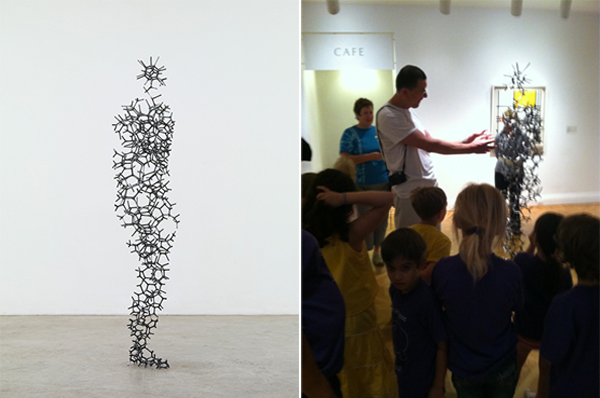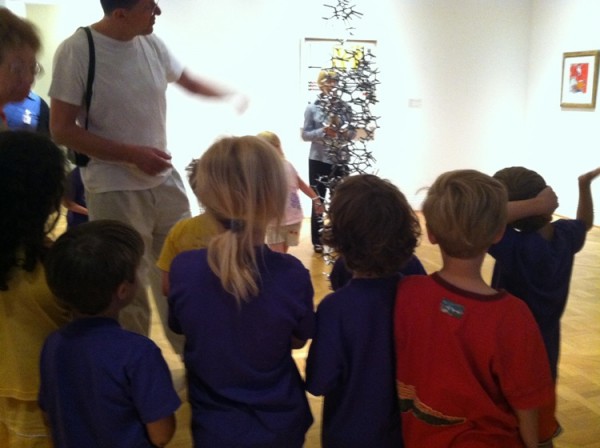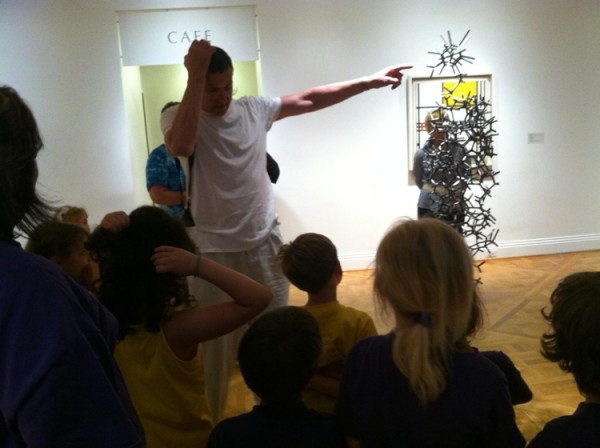As we prepare to open Antony Gormley: Drawing Space, the first exhibition of the acclaimed British artist’s work at the Phillips and his first drawings show at any museum in the United States, the Phillips has been working closely with the British Council to share the exciting news of Mr. Gormley’s work here and around the globe. We are delighted to co-publish with the British Council Voices blog the following guest post by Luiz Coradazzi, Director of Arts at the British Council Brazil, about the Still Being installations the artist unveiled May 12 in São Paulo, Rio di Janeiro, and Brasilia.
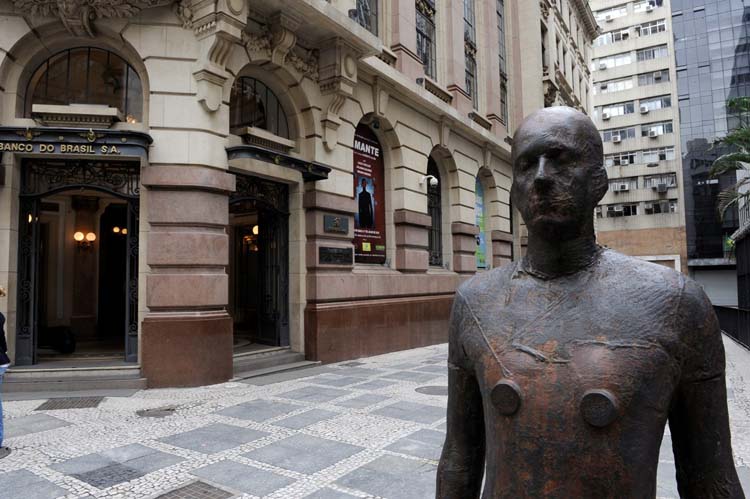
Event Horizon, São Paulo. Photo: Carlo Ferreri
Walking through central São Paulo is for the brave only. The historic district of South America’s biggest metropolis is where the histories of over 18 million people meet and mingle. Everything revolves around the collective and the personal, the vibrant and the inert, the derelict and the so-new-it-has-no-name-yet, and this is pretty much the fabric that São Paulo is made of. It’s for the 18 million brave only, and the perfect place to feel lonely.
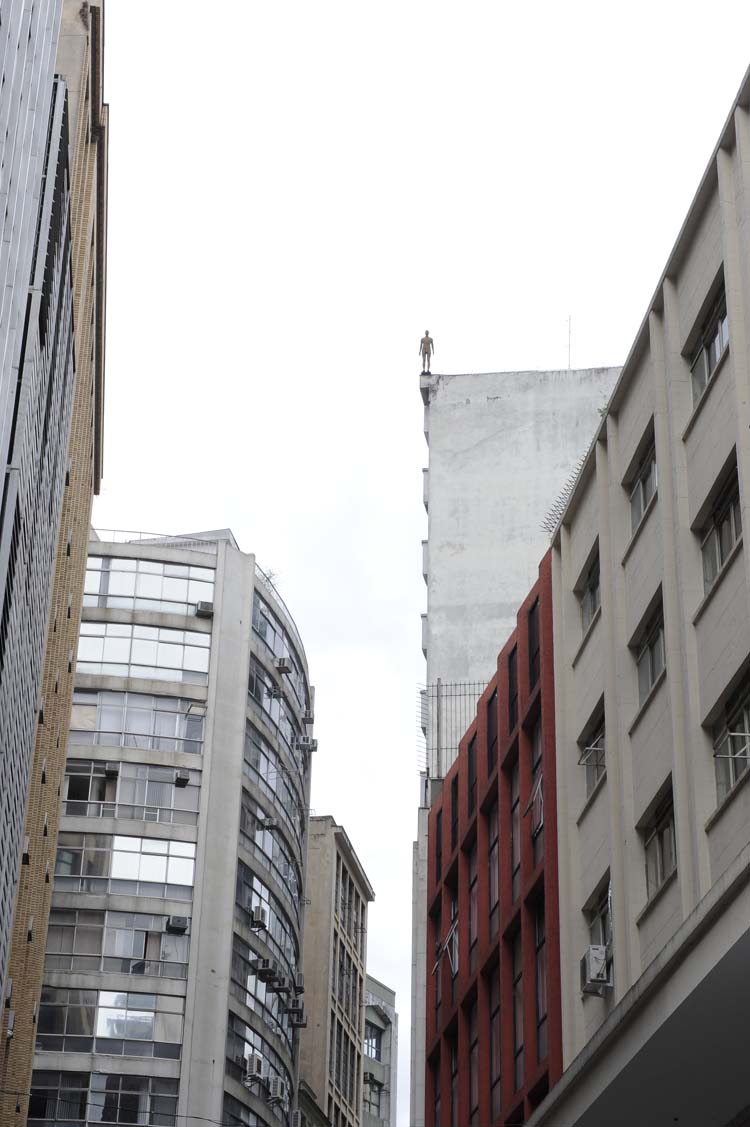
Event Horizon, São Paulo. Courtesy White Cube, London.
And then someone is watching you. And you are positive it’s not anyone in the ever-surrounding crowd, but someone much closer. And it’s watching from atop, and from below, and from a mile away.
This is how spotting Antony Gormley’s figures can make you feel. The 27 life-size human forms are scattered all over Vale do Anhangabaú, on rooftops and balconies, and at the opera house and the bridge. Life goes by fast, and they are still watching you, and only you.
On your way from Theatro Municipal to Centro Cultural Banco do Brasil, the cultural centre that’s hosting Still Being, the first-ever solo Gormley exhibition in Brazil. And you can truly see the effects of those figures upon other brave people. Children stop playing, or start playing harder; pedestrians stop and stare (life miming art miming life?); and pigeons just mind their pigeon business.
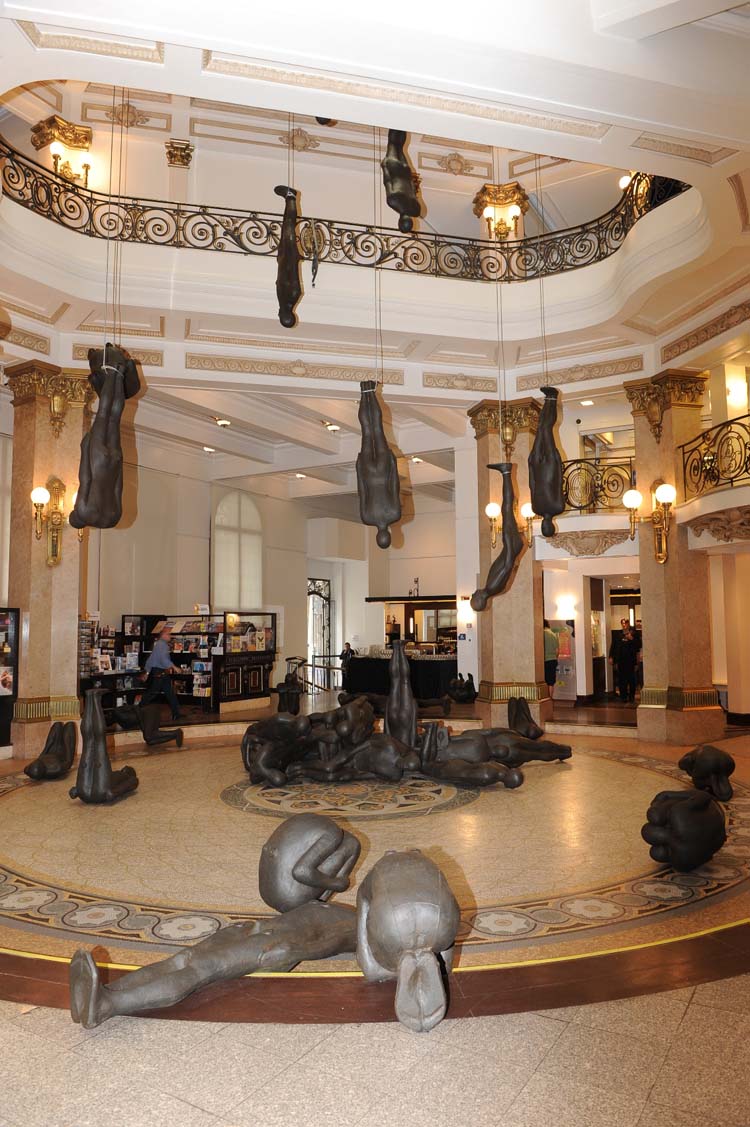
Still Being. Photo: Carlo Ferreri
At this point–both in your walk and in reading this blog post–you might have noticed that Antony Gormley is a remarkable artist. Looking beyond the quality and outstanding ingenuity of his works, Antony is one of those personalities that will not rest until the job of disturbing, provoking, and mesmerising is fully accomplished. Awarded the Turner Prize in the ’90s–among other honours–Antony gives new significance and interpretation to the human figure and its visual echoes.
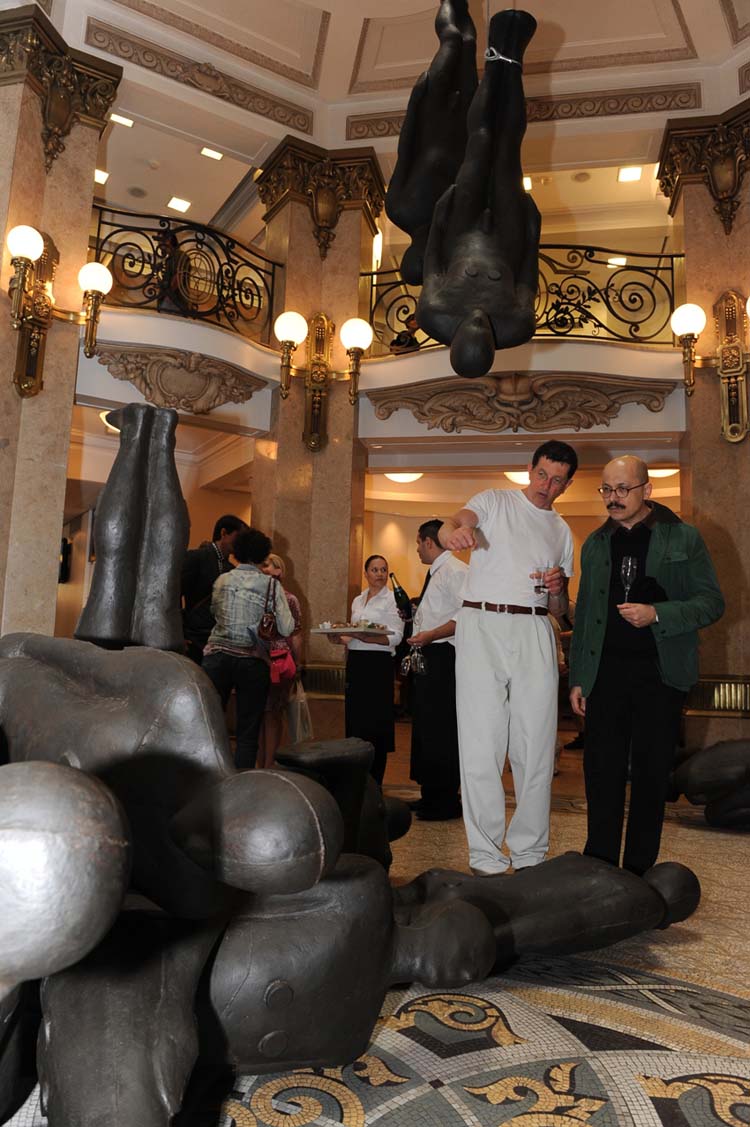
Antony Gormley consults on installation of Still Being. Photo: Carlo Ferreri
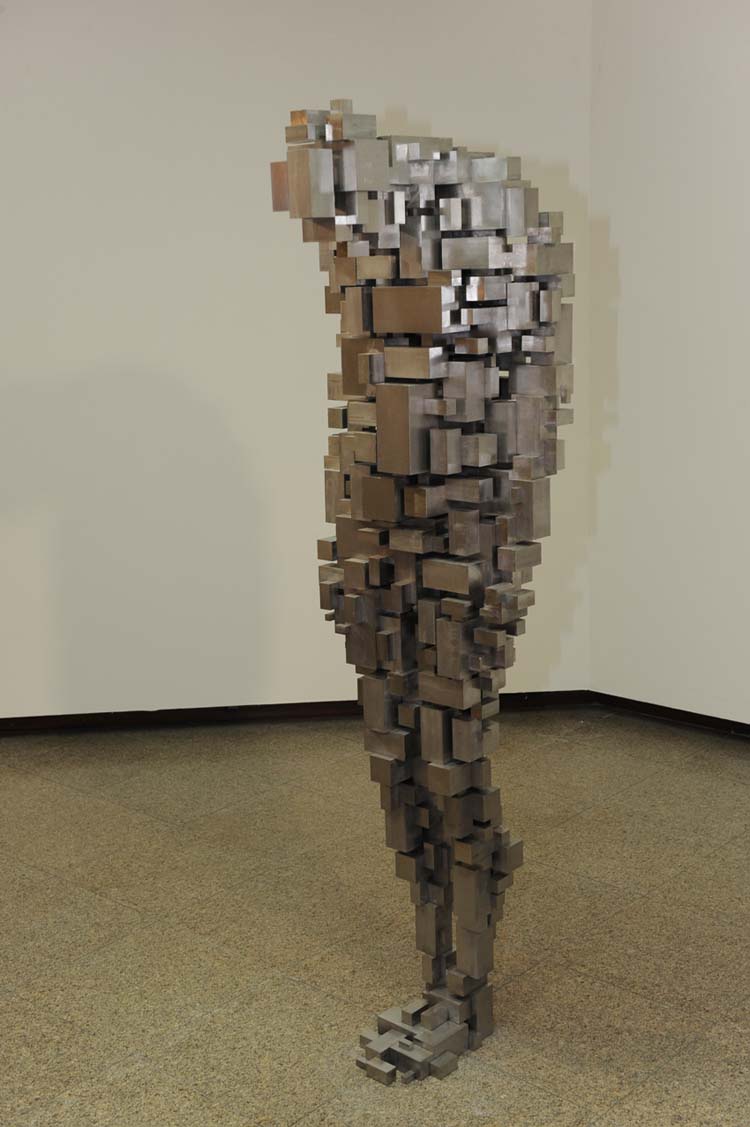
Antony Gormley, Loss, as part of Still Being, São Paulo. Photo: Carlo Ferreri
When the show was confirmed earlier this year, the Arts team at the British Council Brazil literally jumped up and down at the prospect of being a part of it. We firmly believe in the importance and effectiveness of bringing the arts out of the cultural centres and museums onto the streets, and inviting people back inside, and Gormley not only did that but was also generous in sharing his views and creativity in a couple of lectures and open talks. It was like watching his figures talk.
Figures like the ones silently watching you. Still being.
Try not to bother. In fact, dare not to bother. Look ahead and walk past them, and below them, if you are one of the brave. To be honest, the only way they could hurt anyone is by free-falling head first onto the pavement, only 650 kilos each. But somehow they’ve got you already, and it’s now too late to be lonely.
Luiz Coradazzi, Director Arts at the British Council Brazil
